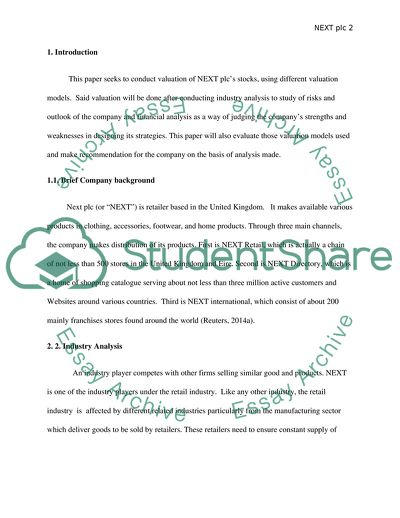Cite this document
(Financial Analysis and Valuation of Next Plc Report Example | Topics and Well Written Essays - 3250 words, n.d.)
Financial Analysis and Valuation of Next Plc Report Example | Topics and Well Written Essays - 3250 words. https://studentshare.org/macro-microeconomics/1817161-a-detailed-equity-report
Financial Analysis and Valuation of Next Plc Report Example | Topics and Well Written Essays - 3250 words. https://studentshare.org/macro-microeconomics/1817161-a-detailed-equity-report
(Financial Analysis and Valuation of Next Plc Report Example | Topics and Well Written Essays - 3250 Words)
Financial Analysis and Valuation of Next Plc Report Example | Topics and Well Written Essays - 3250 Words. https://studentshare.org/macro-microeconomics/1817161-a-detailed-equity-report.
Financial Analysis and Valuation of Next Plc Report Example | Topics and Well Written Essays - 3250 Words. https://studentshare.org/macro-microeconomics/1817161-a-detailed-equity-report.
“Financial Analysis and Valuation of Next Plc Report Example | Topics and Well Written Essays - 3250 Words”. https://studentshare.org/macro-microeconomics/1817161-a-detailed-equity-report.


